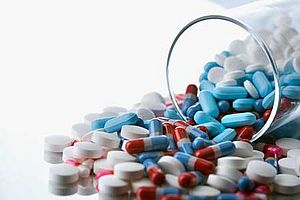Drugs in Wastewater Shift With Seasons

Next stop, Lake Champlain.
Researchers at UVM have looked at the impacts of changes in student populations on drug residues in Burlington’s wastewater, according to an article in the Burlington Free Press. Christine Vatovec, an environmental science research professor, compared the concentration of drugs in the wastewater over a ten-day period at the end of the spring semester in 2014. During that time, antiviral levels decreased; ulcer medications increased; and antihistamines increased with an increase in pollen levels.
It has long been known that pharmaceuticals escape wastewater treatment plants and end up in waterways, but they are not regulated by EPA. They enter the waste stream when unused medications are dumped in the toilet or when they are excreted. Fifty to ninety percent of the active ingredients in ingested drugs pass through the body.
LCC has continually advocated for more attention to this issue, including advocating for an investigation of new generation contaminants in Lake Champlain, publicizing and supporting various drug take-back initiatives, and providing educational information on the proper disposal of unused and expired pharmaceuticals.
Wastewater treatment systems are not designed to remove or process compounds found in medications. Some may be removed in the waste treatment process but different systems remove different contaminants. A study from Washington found, “conventional secondary treatment reduced 21 percent of the 172 organic compounds to below detection levels and achieved high removals for hormones and steroids. Advanced nutrient removal and filtration technologies reduced the number of compounds detected by 53 percent. A total of 20 percent of the 172 compounds were found only in the biosolids, suggesting that some PPCPs (pharmaceuticals and personal care products) can concentrate in solids.” No system removed all contaminants.
